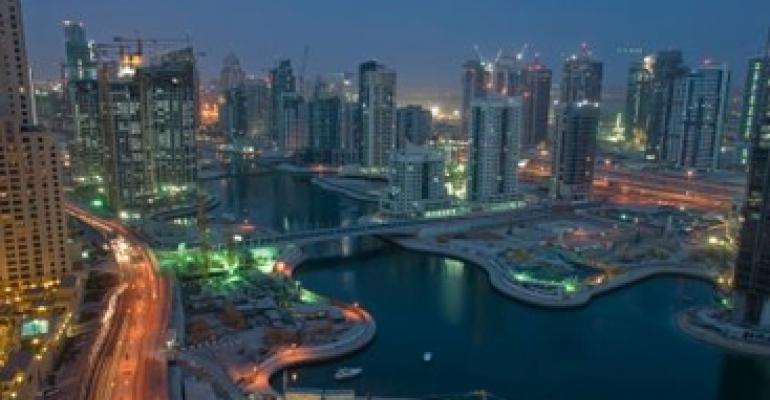Editor’s Note: Jim Young is the founder and producer of Realcomm, a California-based educational organization that examines technology issues related to commercial real estate. This is his first column for NREI’s technology newsletter, and he will contribute others periodically.

Our Realcomm delegation just returned from a trip to Dubai and Abu Dhabi with more than a few unanswered questions regarding the future of the region and the desert dream conceived back in the 1990s by Mohammed bin Rashid Al Maktoum, ruler of Dubai.
Our journey started five years ago when we first visited the region and saw the beginning of Sheik Mo’s dream taking root. In the first year, we saw sandlots and marketing information. By the second year, there were holes in the ground, and in the third year, many tons of steel. The fourth year brought building envelopes and some of the most iconic structures the world has ever seen. But in the fifth year came the crash. One thing’s for sure, an awful lot happened in a very short period of time.
During those early trips we wondered if it could be done. Was it sustainable? Was a 22nd century vision really practical? What would it look like when it was completed? For now, those questions must go unanswered as Dubai works its way through the aftermath of one of the biggest real estate bubbles in recent history.
It is astonishing to see hundreds of half-completed buildings and idle cranes with no construction workers in sight, waiting for their futures to be determined. Projects that have been completed but have no tenants could take five to seven years to fill, say speculators.
And that extended time frame hinges on continued growth of the expatriate population. Some feel that without the opportunity for fast money or the glitz of a rising super city, Dubai might have trouble attracting long-term residents.
There also is the fundamental issue of infrastructure. If these buildings are completed and filled with tenants in the future, will there be enough water, waste treatment, and electricity to service them?
Finally, many question the design and functionality of the transportation infrastructure. Highway exits are limited and overpasses are combined with a partially functional rail system. The city has a mishmash of one-way and poorly designed streets. And when it comes to rapid transit, most people won’t walk from the stations in 120-degree heat. So the question of mobility looms.
For all its troubles, there is still a subtle sense of optimism in the city. With iconic structures like the Burj Khalifa, the world’s tallest building with an incredible view from the 124th floor observatory, and the Burj Mall, the people of Dubai and Sheik Mohammed have much to be proud of.
Only 20 years ago, Dubai was a desert-trading outpost. Today the city hosts some of the largest and most iconic buildings in the world. The question now is whether the dream can continue.
Innovation sets new standard
One of the biggest accidental results of Dubai’s massive development binge was innovation. The quest was simple: bring the best ideas to the region and they will be implemented. This was particularly true in the areas of real estate and technology.
Two firms in particular rise to the top of the list. The first, Eutech Cybernetics, based in Singapore with offices in the Asia Pacific region and the U.S., designed the facility information platform for Dubai Festival City, a privately owned mixed-use development.
Meanwhile, Dubai-based Pacific Controls was responsible for creating a connected command and control center for thousands of Dubai government buildings, as well as a global network for a new breed of property and facility management.
Dr. Hari Gunasingham, Eutech CEO and founder, spearheaded the integration of data from various systems and created a central, real-time database. The data was used to create the first fully integrated resource planning and computer aided facility management system.
Pacific Controls, led by CEO Dilip Rahulan, is one of the world’s most innovative remote facility monitoring companies. It has created a command and control center connecting more than 4,000 Dubai government real estate assets. The company continually monitors these properties wirelessly for fire and other safety events while also monitoring heating and cooling, energy consumption and preventive maintenance needs.
The building controls developed by Eutech and Pacific Controls should be considered the most sophisticated best practices in the world. Simply put, the financial binge of the last five years funded the research and development for the next generation of thinking for the property and facilities management industry.
The key now is to see how Dubai manages its way out of the development frenzy of the last five years, and, equally important, how it capitalizes on the great ideas that it incubated during this time.
If history is a good teacher, this work will not go to waste. Someone will recognize how significant these solutions are, and sooner or later they will become the new global standard for owning and operating commercial buildings.
You can contact Jim Young at HYPERLINK "mailto:[email protected].

